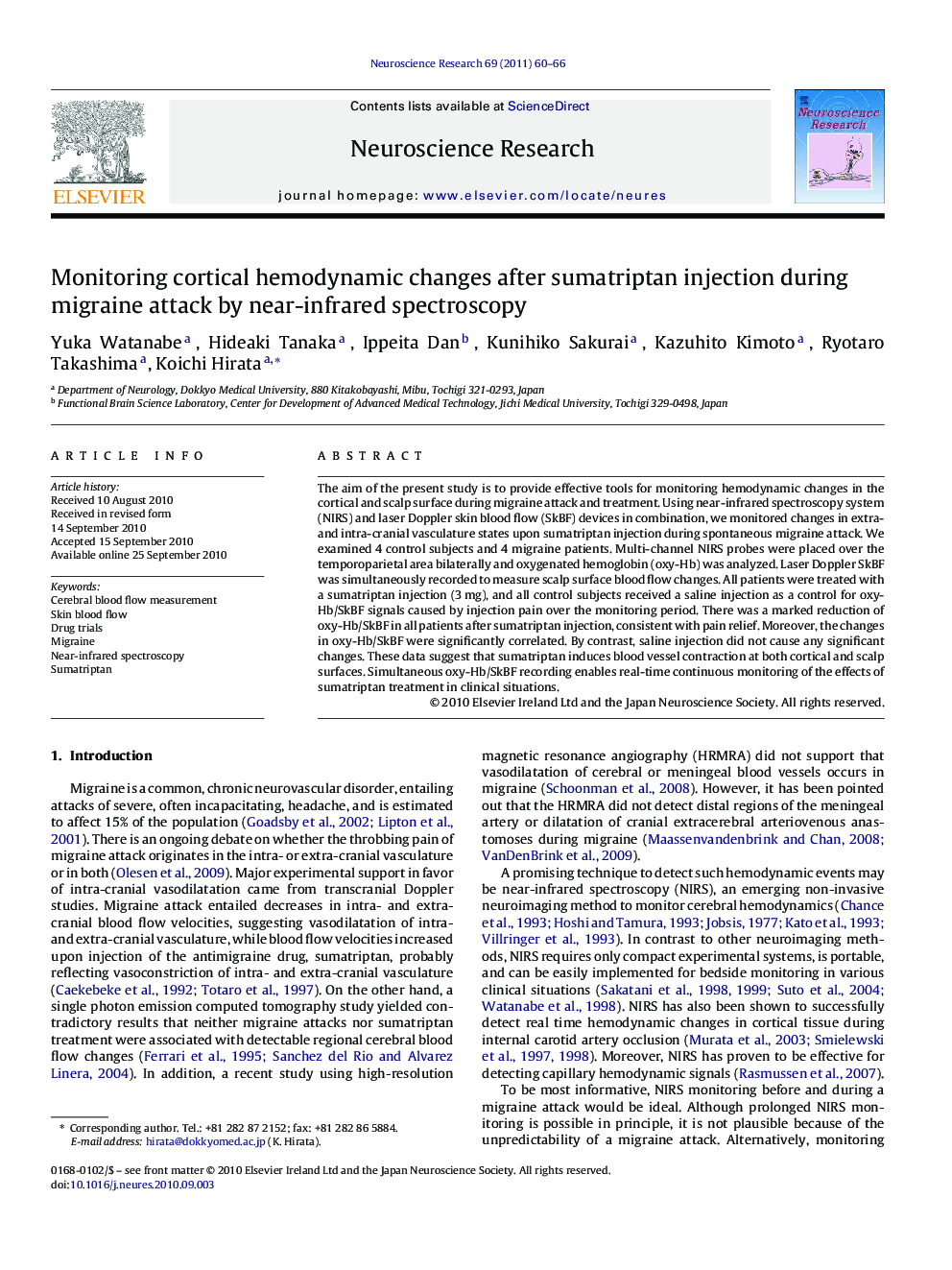| Article ID | Journal | Published Year | Pages | File Type |
|---|---|---|---|---|
| 4352194 | Neuroscience Research | 2011 | 7 Pages |
The aim of the present study is to provide effective tools for monitoring hemodynamic changes in the cortical and scalp surface during migraine attack and treatment. Using near-infrared spectroscopy system (NIRS) and laser Doppler skin blood flow (SkBF) devices in combination, we monitored changes in extra- and intra-cranial vasculature states upon sumatriptan injection during spontaneous migraine attack. We examined 4 control subjects and 4 migraine patients. Multi-channel NIRS probes were placed over the temporoparietal area bilaterally and oxygenated hemoglobin (oxy-Hb) was analyzed. Laser Doppler SkBF was simultaneously recorded to measure scalp surface blood flow changes. All patients were treated with a sumatriptan injection (3 mg), and all control subjects received a saline injection as a control for oxy-Hb/SkBF signals caused by injection pain over the monitoring period. There was a marked reduction of oxy-Hb/SkBF in all patients after sumatriptan injection, consistent with pain relief. Moreover, the changes in oxy-Hb/SkBF were significantly correlated. By contrast, saline injection did not cause any significant changes. These data suggest that sumatriptan induces blood vessel contraction at both cortical and scalp surfaces. Simultaneous oxy-Hb/SkBF recording enables real-time continuous monitoring of the effects of sumatriptan treatment in clinical situations.
